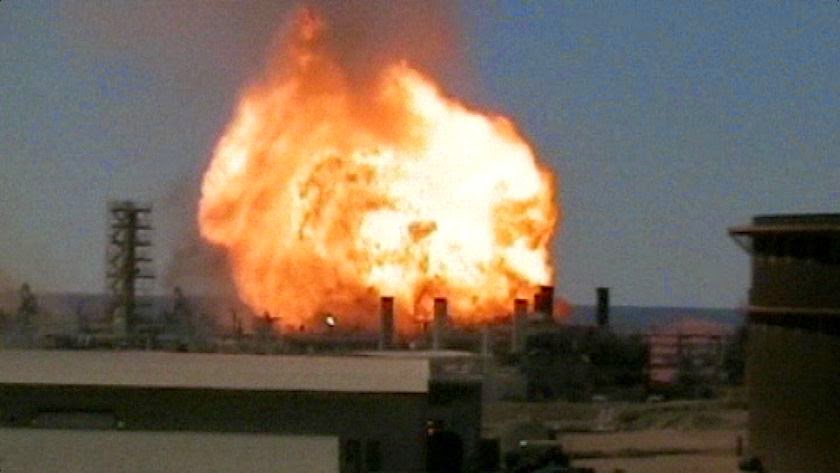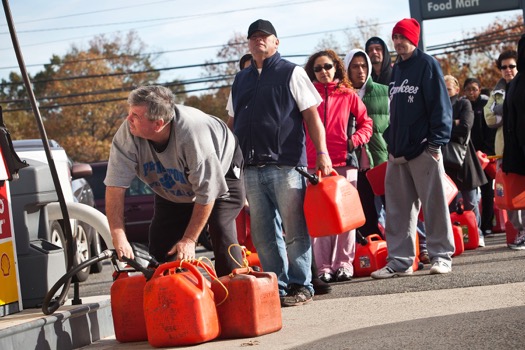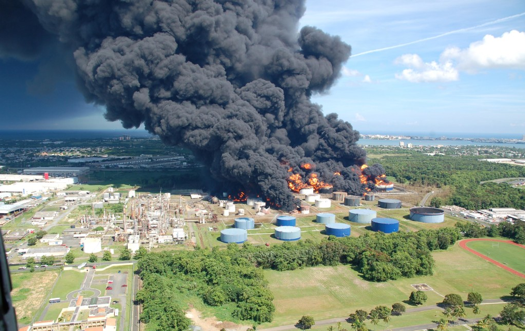The Weakness of Our National Fuel Distribution System
Did you know that we get all of our fuel from around 120 refineries scattered across the country? These refineries are connected to pipelines that receive crude oil before being converted to various forms of fuel. Everything from aviation fuel to diesel, heating oil and the gas that we use for our vehicles comes from these sources. Our entire fuel distribution system is built on this foundation, and it’s more vulnerable than ever.
A Fire and Rising Prices
When a fire occurs at a refinery, which happens on a pretty regular basis, it causes wild fluctuations in gas prices. The refinery can be one side of the country and cause prices on the other side to go up dramatically. The reason for this is that supplies need to be diverted from other refineries to offset the reduction in daily output, and this reduces what is available for everyone at any given point in time.
The solution is to build more refineries, but both oil companies as well as the government do not want to do this because they are expensive to construct, and any additional output can cause fuel prices to drop. The result is lower profits for everyone along the distribution chain, and nobody likes that idea. Instead, companies reap huge profits when supplies are disrupted, and this is exactly what the system is designed to do.
Pipeline Destruction

The second most vulnerable weakness comes from our pipelines, which are surprisingly insecure. Aside from pipelines that travel hundreds or thousands of miles, we get a lot of our oil from tankers that bring it to shore from other parts of the world. All it takes is a natural disaster, or a coordinated act of sabotage or terror to cut oil off at the tap. Furthermore, it can take weeks to months to get things repaired and operations moving normally. In the meantime, our entire way of life can be severely disrupted. Everything from the transport of consumer goods to food, water and medical supplies can come to a grinding halt. This is not the stuff of conspiracy theories. This is a risk that is very real and sooner or later will impact us once a disaster strikes.
Terminal Facilities

Once oil is refined into fuel, it is delivered to terminal facilities that distribute it to local stations. Airports, rail yards and your corner gas station all rely on these facilities to receive and send out fuel. Fires as well as technical glitches to weather problems frequently cause distribution problems, and the result is that gas stations run dry. While most problems are resolved in a day or two by bypassing the terminal that has been impacted, a large-scale crisis can have a knock-on effect that can paralyze the entire country.
At the end of the day, we have enough reserves to keep us going for a few months. However, the government will severely limit the amount of fuel that can be released on a daily basis to stretch supplies as far as possible. Prices will skyrocket, rationing will take place and every aspect of our daily lives can come to a screeching halt in the blink of an eye.
Our dependence on this weak system of distribution and lack of reserves is something that we don’t really talk about or fully appreciate. However, it is something that can easily be attacked, destroyed or compromised, and the consequences can ultimately have a long-term impact over how we live. Always remember that we’re not just preparing for a natural or man-made disaster. A disruption to fuel in this country can make access to food, water and medical care almost impossible for days or weeks following the event. Remember that your bug out plans can also be severely-hampered by a fuel crisis.
Consider how such a contingency can influence your preparedness efforts and adapt accordingly. There’s a good chance that a fuel crisis may be the next SHTF situation that the United States faces, so it’s important to be ready for that eventuality. Take time now to make adjustments, because when this happens, chances are that it will occur with little or no warning.


